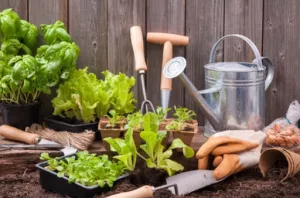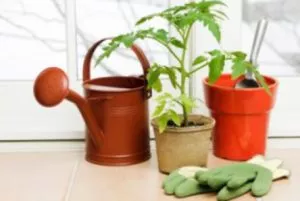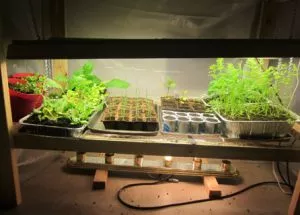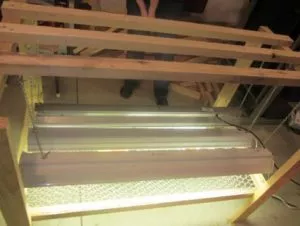
Are you an aspiring gardener looking for a way to improve your chances of lush plants and an abundant harvest of vegetables from your garden this year? Of course, you can buy plants from the garden centre, but a great way to save a little bit of money and still see excellent results is to sow your own seeds. While you can start seeds off in the house, using the garage can be a great alternative.
Gardening requires foresight
If you want to be able to enjoy your vegetables and decorative plants at the peak time, you need to plan in advance. Planting seeds indoors is a great way to get a head start before the ground thaws, you should research online or in gardening books to find out the best time to plant.
When we talk about planting, we’re talking about seeds, bulbs and cuttings. For example, if you’ve ever tried to grow tomato plants from seed before, you know that you need to transplant healthy plants in June when the ground thaws, therefore you need to start the seeds off early.
This article isn’t about using your garage 365 days a year to grow vegetables and plants, it is simply suggesting that you use your garage to start plants off and increase your outdoor harvest. Many plants and flowers can be started off in garages, including edible plants such as tomatoes, herbs, carrots, lettuce and spinach.
How to set up your garage
Once you’ve had the last snowfall, you can move your car out of the garage, leaving you ample space to set up a gardening corner. Seeds need light and heat to grow, therefore you should avoid placing seed trays on the concrete floor (although big pots for bulbs should be okay on the floor). If you have a well‑insulated, heated garage you should be able to maintain the desired temperature.

Set up your gardening corner near a light source, if you have windows in your garage you should locate your gardening space near them. You will also need to install lighting that also serves as a heat source, we would suggest installing fluorescent lighting, as outlined below. Building a simple wooden shelving unit will help heat to circulate.
The basics
- Trays or small pots: you can buy seed‑specific trays and pots from your garden centre, or you can use yoghurt pots and other similar items that you have at home.
- Soil: choose the potting soil best adapted to the plants you’re growing.
- Thermometer
- Spray bottle: spraying seedlings with water is a much more effective way to keep them hydrated than by watering them, which can often cause root rot.
- ID markers: use these to tell your seedlings apart.
Lighting
- 7 or 12 x 48‑inch T‑8 fluorescent bulbs (halogen or incandescent lighting would also work).
- A timer to turn the lighting system on and off.
Plastic sheeting to control the temperature (if needed).


You just need one more thing…
PATIENCE!
Also, think about researching companion plants based on what you are planning to grow, for example basil and tomatoes do not only taste excellent together, but they are ideal companion plants as basil repels insects that damage tomato plants.
And don’t forget if you’re thinking about upgrading your garage door…
Contact us at 781-270-5066, you can also request a free quotation online. We’ll even come out to your home to evaluate your needs.
If you do decide to change your door, have a look at our design center tool or image gallery for inspiration.

Add new comment